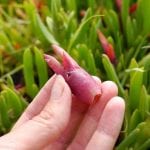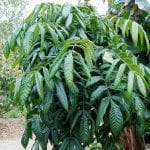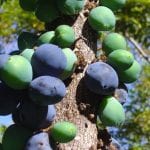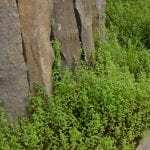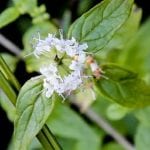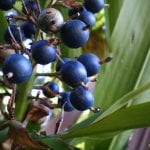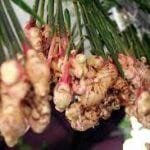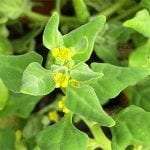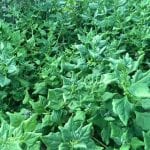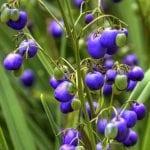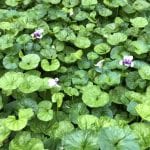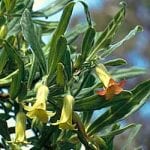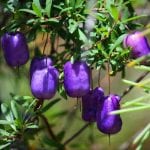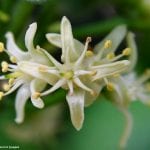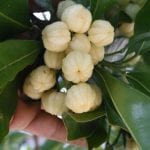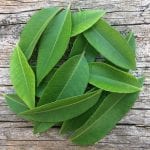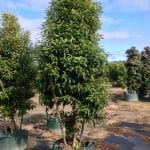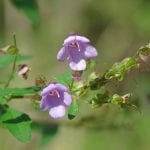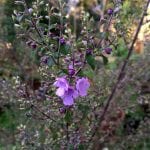
Best Edible Australian Native Plants for the School Garden (Part 1)
All around the world, school gardens dedicate growing areas for native plants.
The Australian Native Plants Society defines “native plant” as:
“any plant indigenous to Australia as included in the Australian Plant Census except those identified therin as naturalised. An Australian native plant also includes any hybrid or cultivar in which all parents are Australian native plants.”
When choosing native plants for the school garden, choose those that are safe for children, where no parts can incur physical harm (i.e. thorns) and no parts are poisonous or irritating to skin, eyes, etc.
Our list contains only edible, nontoxic plants, safe to grow with children and for up close encounters.

Native plants typically grow well in the garden, having evolved specifically to the region’s climate and soil conditions. They are low-maintenance, requiring little to no water apart from rainfall as well as little to no fertilizing. They provide habitat, food and shelter for native bees, birds, insects, small mammals, reptiles and frogs (Source: Government of South Australia).
Specifically edible native plants have been cherished for centuries by native peoples as sources of food and medicine, making them a gateway to learn about indigenous peoples and regional history.
Our list comes to us from Linda Dipper, owner of Oz Tukka in Redhead, NSW, who is passionate about educating the community in the identification, history, culinary and medicinal use of native Australian plants.
If you need assistance sourcing any of these plants contact Oz Tukka on their website at oztukka.com.au. You can also follow them on Facebook and Instagram @oztukka for updates on where you can find them in person at markets around Newcastle and Lake Macquarie.
Sustainable Play Preschool & Oz Tukka do not take any responsibility for any adverse effects from the use of plants. Always seek advice from a professional before using a plant medicinally.
1. Pigface (Carpobrotus rossi):
This creeping succulent has a silly name, due to the non-apparent likeness of the flower to a pig’s face. It can be found growing in coastal areas, on sand dunes and along the beach. Its bright purple/pink flowers bloom from October to January.
- Aboriginal names: Karkalla, golbooga, johnny koolbung, kolbogo, golboy
- Edible parts: Leaves, fruit, flowers
- Culinary use: The red-purple berry fruit was used by Aboriginal peoples as a food source. Linda describes the fruit as tasting like a “salty strawberry.” The leaves can be roasted and used as a salt substitute.
- Medicinal use: Due to its Vitamin C content, Early European explorers used the plant to treat scurvy. Its salt, water and mineral content act similar to electrolytes in replenishing those who are dehydrated. The juice of the leaves is similar to aloe and can also be used to soothe burns and itchy insect bites. The fruit contains significant amounts of antioxidants. Who knew that this common coastal plant was so versatile, beneficial and garden-desirable!
- Sources: Australian Government Native Plants Initiative, Antrhologpy from the Shed
2. Davidson Plum (Davidsonia jerseyana):
This peculiar plum tree produces fruit on its trunk, allowing small children to join in the harvesting fun. The fruit is dark blueish purple on the outside and deep reddish pink on the inside. Its tart flavour lends itself to inclusion in food preparations as opposed to eating it raw. The species grown in New South Wales is endangered and a permit is required to harvest the fruit. All the more reason to grow one yourself!
- Aboriginal name: Ooray
- Edible parts: Fruit, fruit pulp
- Culinary use: The plum’s tartness and colour are used in the food industry to dye and flavour jams, chutneys, sauces and yoghurt. Early settlers used the plum in jams, jellies, and full-bodied wines.
- Medicinal use: The plum contains high levels of antioxidants, vitamin E, lutein, folate, zinc, magnesium and calcium.
- Source: Agrifutures
3. River Mint (Mentha australis):
Low growing, edible and minty – it’s a refreshingly edible ground cover for schools and childcare centres. River mint can grow in a wild sprawling habit, so eager little hands that are not always so gentle when harvesting, may just be its perfect complement!
- Aboriginal name: Poang-gurk
- Edible parts: Leaves, flowers
- Culinary use: Use the fresh or dried leaves as a mint substitute in teas, juices, smoothies, desserts, salads, sauces and dressings.
- Medicinal use: Like other mints, river mint can be used in teas to soothe digestive troubles, headaches and fevers. It also has antiseptic properties.
- Sources: Australian Native Plants Society, Plants For A Future
4. Native Ginger (Alpinia caerulea):
Australia’s native ginger is less spicy than Asian ginger making it more palatable for children still exploring different flavours. It grows best in shaded understories, with moist soil and shelter from direct sun. Children can enjoy picking and eating the fresh, young shoots as well as digging underground for the tasty rhizomes to use in culinary and medicinal recipes. The broad leaves can be used in building play – it was once used by Aboriginal peoples to make thatch roofs.
- Aboriginal name: Not found
- Edible parts: Rhizome, shoots, leaves, fruit (not the seeds)
- Culinary use: Eat the young shoots fresh and use the rhizome in curries, sauces, dressings, smoothies, juices, marmalades, etc. The bright blue fruit pulp around the seeds can also be eaten. Aboriginals would use the ginger leaves to wrap food prior to cooking.
- Medicinal use: The root is used as an anti-inflammatory and for treating digestive issues.
- Sources: Sustainable Gardening Australia, Tucker Bush
5. Warrigal Greens (Tetragonia tetragonoides):
This Aussie spinach grows like a weed with small yellow flowers that are as edible as its leaves! What better way to encourage eating greens than by getting children to forage them from the garden themselves?
- Aboriginal name: Warrigal (Dharug language, meaning “wild”)
- Edible parts: Leaves, flowers
- Culinary use: The high oxalate content of these greens is similar to spinach, so only eat a few raw leaves. Oxalate breaks down when lightly cooked or blanched. Try warrigal greens in a garlicky stir-fry, in soups, stews and as a steamed vegetable.
- Medicinal use: The plant is high in Vitamin C and iron.
- Source: Southern Cross University, Tucker Bush
6. Blue Flax-Lily / Blueberry Lily / Black Anther Flax-Lily / Spreading Flax-Lily (Dianella caerulea, Dianella revoluta, Dianella prunina):
This hardy plant produces edible sweet blue berries with tiny nutty seeds. Children can play with the wire-y, strappy leaves that were traditionally used as cords and strings. The small, intricate purple flowers bloom from spring to summer and produce deep blue fruits. Be careful to choose a variety with edible berries – Dianella tasmanica and Dianella intermedia are known to be toxic and should not be consumed.
- Aboriginal name: Mangar (Noongar)
- Edible parts: Fruit, seeds, root
- Culinary use: The sweet fruits and nutty seeds can be eaten fresh or cooked in sweet or savoury dishes. Pound and roast the root to eat.
- Medicinal use: Use as a tea with the roots for treating colds and the leaves for treating headaches.
- Sources: Australian Government Native Plants Initiative, Tucker Bush, Oz Breed
7. Native Violet (Viola hederacea):
These sweet purple and white flowers grow all over Australia, are edible and can handle a bit of light foot traffic, making them great ground cover out of direct sunlight in the garden.
- Aboriginal name: Not found
- Edible parts: Leaves, flowers
- Culinary use: Add the leaves and flowers for native flair in a light spring salad. The mild flowers add a colourful garnish to any dish, smoothie or dessert. “Candy” the flowers with a sugar wash to garnish cakes.
- Medicinal use: None found
- Source: Sustainable Gardening Australia
8. Appleberry / Apple Dumplings / Snotberry (Billardiera scandens):
This hardy ground cover is a sensory cornucopia for children! Its leaves are hairy on top and silky underneath. Its yellow, purple-tinged bell-shaped flowers are edible and highly trafficked by pollinators. Flowers peel away as the plant produces sweet, oblong, hairy berries that ripen from greenish purple to yellow and can be eaten raw or cooked.
- Aboriginal names: Bomula (Sydney region), Karrawang (Victoria)
- Edible parts: Fruit, flowers
- Culinary use: The small, oblong fruits are ready when they fall to the ground and can be eaten fresh when yellow ripe, or roasted if still green. The fruit skin is hairy like a peach and the fresh flavour is likened to a kiwifruit, the roasted flavour is like dried apples.
- Medicinal use: None found
- Source: Australian Government Native Plants Initiative
9. Lemon Aspen / Pigeon Berry (Acronychia acidula):
This citrus tree is found in full sun in the rainforests of Queensland down the coast in New South Wales. Children will enjoy commenting on the sweet, sour, small, lemon and grapefruit tasting fruits it produces in the summer and autumn.
- Aboriginal name: Not found
- Edible parts: Fruit, fruit pulp
- Culinary use: The small edible fruits are only about 2cm in diameter. Flavour notes include sour, tart, citrus, lemon, lime, grapefruit, eucalyptus and even slightly conifer. Fruits are great for sweet desserts treats like jams or tarts. They can also be used to give a unique citrus tang to sauces, broths, teas, syrups, chutneys, relish, mayo and dressings.
- Medicinal use: Lemon Aspen fruit and fruit extracts are high in antioxidants and are reported to boost the immune system, reduce the risk of flu and common cold, protect the skin from UV rays, reduce and repair signs of aging, promote wound healing and amplify collagen synthesis. They are a rich source of folate, iron, zinc, potassium, calcium and magnesium.
- Sources: Australian Native Food & Botanicals, Warndu
10. Lemon Myrtle / Lemon Ironwood / Sweet Verbena Tree (Backhousia citriodora):
This modest looking tree with creamy white fragrant flowers boasts leaves with “the highest amount of citral (>90%) of any plant known in the world.” How could we not grow a tree whose leaves are described as “lemonier than lemon”? (Australian Native Foods & Botanicals).
- Aboriginal name: Not found
- Edible parts: Mature leaves
- Culinary use: The leaves are used fresh or dried in teas, lemonades, syrups, glazes, cakes, biscuits, dressings, mayonnaises, sauces and ice creams.
- Medicinal use: Lemon myrtle essential oil is made from the leaves and used as an antimicrobial and antifungal, as well as a popular scent in cosmetics and soaps. Indigenous peoples have used lemon myrtle for thousands of years as an antiseptic on wounds, cuts and scrapes. Studies have shown lemon myrtle essential oil to be effective against a hospital isolate of methicillin resistant Staphylococcus aureus (MRSA), food borne human pathogens, common food spoilage bacteria and common food spoilage yeasts and moulds. The leaves have high levels of antioxidants, lutein, calcium, Vitamin E and folate.
- Sources: Australian Government Native Plants Initiative, Australian Native Food & Botanicals, Tucker Bush
11. Native Oregano / Round Leaf Mint (Prostanthera rotundifolia):
With round leaves and beautiful tiny purple flowers, this aromatic herb smells and tastes somewhere between oregano and mint. It grows as a small, vigorous shrub in New South Wales, South Australia, Victoria and Tasmania (listed as a “vulnerable species” in Tasmania). For any avid flower pickers or flower eaters, this plant has plenty to share!
- Aboriginal name: Not found
- Edible parts: Leaves, flowers
- Culinary use: Can be used as an oregano substitute with an earthier, citrus flavour for flavouring salads, dressings, vegetable and sauces.
- Medicinal use: Steep in hot water as a tea to treat headaches and colds.
- Source: Tucker Bush
12. Native Thyme / Cut-leaf Mint / Native Sage (Prostanthera incisa):
Give students the challenging task of distinguishing this herb from its plant cousin “Native Oregano / Round Leaf Mint” above. Scrubby native thyme can be found along the New South Wales coastline, in the margins of rainforests and growing sheltered under forest trees. This herb was used by Aboriginal peoples medicinally, but can also be used in culinary recipes.
- Aboriginal name: Not found
- Edible parts: Leaves, flowers
- Culinary use: Its peppery, earthy flavour adds depth to roasted dishes and complements sauces, soups and dressings.
- Medicinal use: Use as a healing tea for aches and colds.
- Source: Tucker Bush
Stay tuned for Part 2 of Linda’s “Best Edible Native Australian Plants for the School Garden”!
Written By
Suzie has always loved working with children and graduated from Boston College’s School of Education with a Bachelor’s in Human Development/Applied Psychology and Communication.
Since having her first child and moving to Australia with her husband, Suzie has been excited to be working with Sustainable Play Preschool where her values in sustainability, education and care for the natural world all come together beautifully.




